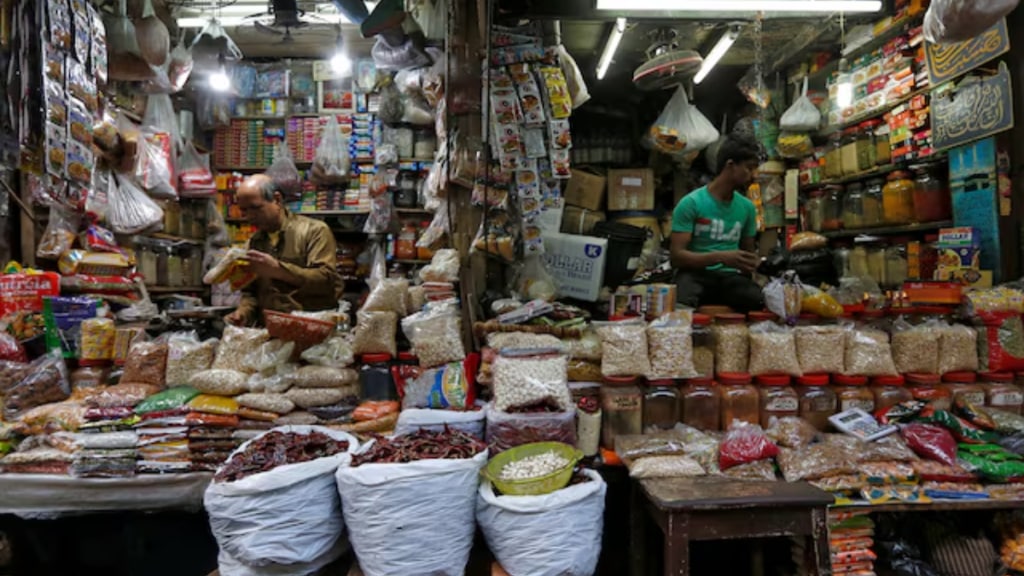Retail inflation fell to an 11-month low of 4.83% year-on-year in April from 4.85% in March, mainly due to a higher deflation in fuel and light and lower core inflation, data released on Monday by the statistics ministry showed.
On a sequential basis, the CPI index rose 0.5% in April, the highest rate in six months. The increase in sequential price pressures was led by higher food prices.
This would be the last inflation data point ahead of the Reserve Bank of India’s monetary policy committee meeting in early June. While headline inflation, based on the Consumer Price Index (CPI), is heading closer to the 4% inflation target, experts point out food inflation remains high. Moreover, close to 25% of the total commodities in the CPI basket continue to see inflation of above 6%.
Food inflation, represented by the Consumer Food Price Index (CFPI), rose to a five-month high of 8.7% y-o-y in April. In March, the CFPI inflation was 8.52% y-o-y. RBI has projected CPI inflation to average 4.5% in FY25 and 4.9% in Q1 of the current fiscal. However, most economists estimate headline inflation in Q1 would average above 5% against the backdrop of elevated food prices.
Aditi Nayar, chief economist at Icra, said inflation in the food and beverages group (46% of the CPI) inched up to 7.9% in April 2024 from 7.7% in March 2024. “This was not broad-based, and was led by higher prints across just four of the 12 sub-groups, namely cereals, meat and fish, oils and fats, and fruits,” she pointed out.
The flat headline and core inflation prints will continue to provide respite to the MPC, but economists say “erratic weather and heatwaves” will keep the sentiment cautious. “We do not expect much change to RBI’s narrative for now, as a prolonged pause in policy rates remains the base case,” said Upasna Bhardwaj, chief economist, Kotak Mahindra Bank.
Inflation will likely tick up to 5.0-5.1% in the next month, said Madhavi Arora, lead economist, Emkay Global. “Considerable uncertainty prevails in the food price outlook. Despite healthy progress in rabi production, uneven seasonality in vegetable prices, together with increasing incidence of climate shocks, warrant careful monitoring,” she said.
DK Srivastava, chief policy adviser at EY India, noted that CPI inflation in April continues on its downward trend since December 2023. “It is the second successive month when inflation is below 5%,” he said. “Although food inflation is marginally higher at 8.7%, the downward pressure emanates from petroleum related commodity groups namely, fuel and light and transport and communication services,” he added.
During April, inflation in the vegetables and pulses categories remained in double digits for the sixth and 11th consecutive month, respectively, thereby contributing to the elevated food and beverages print. The inflation of fuel and light, accounting for 7% of the CPI, eased further to (-)4.24% in April from (-)3.24% in March.
Core inflation, which excludes food and fuel products, remained flat at 3.2%, which is the lowest rate in the current CPI series, with base year 2012. “This is indicative of weak consumer demand conditions prevailing in the economy. The services inflation had dipped further to 2.8% lowest since the data was available,” India Ratings and Research (Ind-Ra) said in a note.
Core inflation is seen being lower in the next few months as well, and may rise July onwards, say economists.

